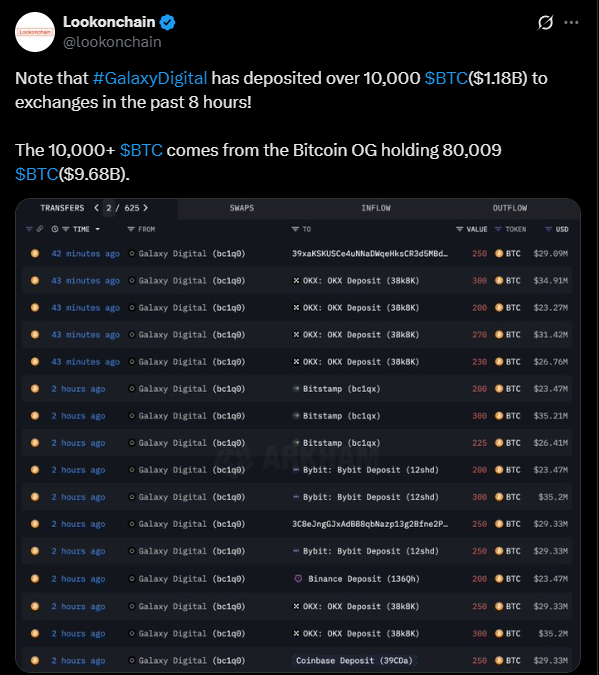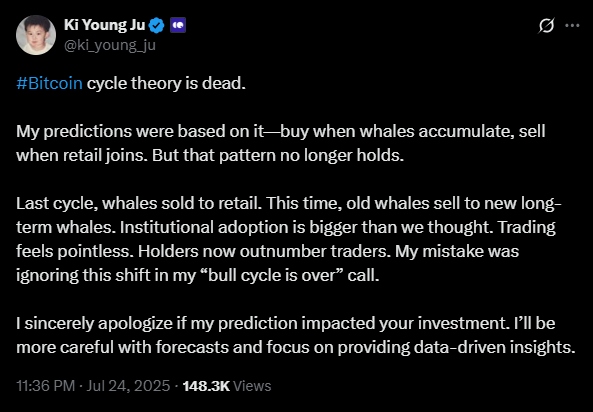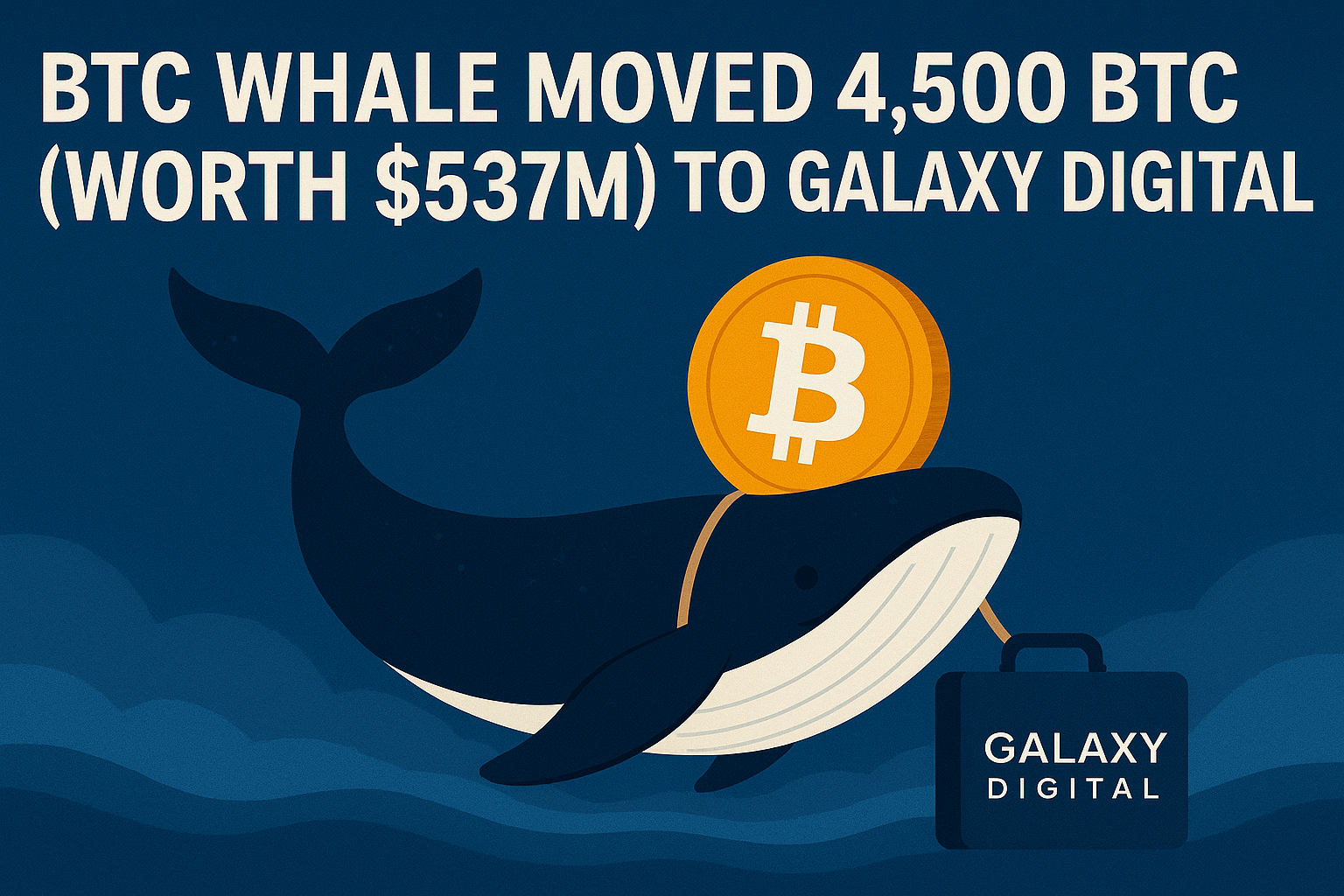Key Points:
- Galaxy Digital recently transferred 30,000 BTC, worth $3.5 billion, to major exchanges.
- The Bitcoin sale was linked to a Satoshi-era whale wallet, which had been inactive since 2011.
- Despite the massive transfer, markets held steady with only a brief price dip.
Galaxy Digital recently made headlines after offloading over 30,000 Bitcoins worth around $3.5 Billion. The move came after the company received a massive stash of Bitcoin from a Satoshi-era whale wallet.
This wallet had been dormant since 2011. While the scale of this transaction raised issues about market volatility, the general effect was surprisingly mild.
Galaxy Digital Transfers 17,123 BTC in Just 12 Hours
The transfers started when Galaxy Digital received 80,009 BTC from a wallet linked to early Bitcoin mining. The sender split the transfer into two batches of 40,000 BTC each. The first landed on July 15 and the second on July 18.
By July 25, Galaxy had moved 17,123 BTC worth roughly $1.98 billion to centralized exchanges. The names of these exchanges include Binance, Bybit, Coinbase, Bitstamp, and OKX within 12 hours.
According to blockchain analysts at Lookonchain, the largest single-hour transfer reached 5,690 BTC.

At the same time, the firm withdrew $370 million in USDT from exchanges. This added to the speculation that Galaxy was repositioning its assets beyond just selling BTC.
Market Effects Were Minimal and Controlled
Despite the flood of Bitcoin entering exchanges, the overall market remained relatively calm. Bitcoin prices dropped by just over 2% after the transfers, falling from $119,000 to a low of $115,444.
While this sparked concerns of a sell-off, analysts say the correction was driven more by long-leverage liquidations than panic selling.
Over-the-counter (OTC) services of the Galaxy Digital likely helped reduce market panic. These services allow large transactions to occur without hitting the open market directly. That is why the market did not suffer a drastic price swing.
“Dormant whale movements have not consistently led to major market corrections,” noted Bitfinex analysts. “This activity may signal institutional readiness rather than bearish sentiment.”
Galaxy Digital Still Holds Over $2B in Bitcoin
Even after the massive BTC dump, Galaxy Digital still holds 18,504 Bitcoin, worth around $2.14 billion. The company also moved another 3,500 BTC to exchanges on July 25. It shifted 1,500 BTC to other unidentified wallets.
Some believe part of the BTC supported Galaxy’s internal operations. However, others speculate it was redistributed or sold. This approach to portfolio rebalancing shows Galaxy’s asset management strategy, especially as institutional interest in crypto grows.
A New Chapter in the Bitcoin Whale Story
The Bitcoin in question originally came from a “fossil” wallet, which had been untouched since the early days of Bitcoin. Blockchain watchers have long monitored such wallets due to their ability to push or pull the market.
According to on-chain analyst EmberCN, the original whale likely has about 12,000 BTC left to be sold. The rest has been offloaded via OTC and exchange trades.
Despite fears about a potential crash, the market has absorbed most of these coins without panic. This relative stability results from the market maturing and becoming deeper over the years.
Galaxy Digital’s Moves and Institutional Trends
The effects of the BTC sales of Galaxy Digital go far beyond price action. As noted by the CEO of CryptoQuant, the recent wave of whale activity shows that the Bitcoin market structure is changing.

“Last cycle, whales sold to retail. This time, old whales sell to new long-term whales,” he posted on X. “Institutional adoption is bigger than we thought. Holders now outnumber traders.”
Galaxy’s role in this transition is also worth noting. The asset manager is a middle party between long-term holders and institutional buyers. This showed that the company is helping to reshape the Bitcoin cycle narrative.


